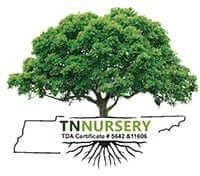
Dog wood trees
Share
The Meaning and History of the Dogwood Flower
We know it’s springtime when we see a dogwood tree or bush blooming in the early spring. Its delicate petals and rounded appearance make it a beloved flower. It’s native to most of the U.S. and has a number of different species around the world. What is a dogwood flower? What does it mean, and why is it loved? Read on to find out.
What Is a Dogwood Flower?
Dogwood trees (Cornus) are part of the Cornus genus. There are about 30 to 60 species of trees worldwide, but we’re focusing on the Cornus florida (flowering dogwood) native to the eastern U.S. The dogwood trees bloom from March to May. It’s a small, deciduous tree that fits well in a backyard or city setting.
Why Is the Dogwood Tree So Popular?
There are many reasons why people plant them in their yards and landscapes. Here are a few:
They’re an early bloomer. Dogwoods are one of the first to show up in the spring, signifying a change of seasons and new beginnings.
They’re a compact tree. Growing only 15 to 25 feet tall, they don’t take over the landscape.
They have seasonal interest. They’re not just beautiful in the spring, but they have colorful leaves in the summer, changing leaves in the fall, and beautiful berries for winter wildlife.
They’re low-maintenance. Dogwoods are easy to maintain once established and thrive in USDA Zones 5 through 9.
Cultural and Symbolic Significance
Dogwood flowers hold cultural significance for several reasons. They are linked to Jesus’ crucifixion. Many believe the cross was made of dogwood, and the dogwood tree itself has four parts that form a cross, with a reddish coloring at the tips. While this is likely untrue, the legend has remained with the dogwood tree.
It’s a flower meaning “stability, rebirth, and purity.” While this isn’t a literal definition, it represents its inner strength, making it a good symbol of new beginnings or personal change for a friend.
Ideal Growing Conditions
Dogwood trees need full sun, but should have protection from hot afternoon sun. It needs moist, well-drained soil. Here’s how to plant a dogwood:
Soil: Rich, slightly acidic, and well-drained
Watering: Water regularly in the first year to establish roots. They are fairly drought-tolerant once established.
Spacing: Dogwoods need about 15 to 20 feet of space between them for good air circulation.
Pests and Problems to Watch For
Dogwood trees are relatively low-maintenance, but here are a few problems to watch for:
Dogwood anthracnose: It’s a fungus that results in leaf spotting and dieback. It’s more common in cold, damp climates, so it’s not as much of a problem in warm, sunny climates. You can get disease-resistant varieties.
Borers and scale insects: They can harm the dogwood if it’s sickly. Planting in well-drained soil and using proper watering helps strengthen the tree.
Leaf scorch: This is often caused by dryness or hot sun. Plant it in an area with morning sun and afternoon shade.
Types of Dogwood Trees
There are a number of different dogwood trees to choose from. Each has slightly different characteristics, so it’s important to pick one that’s right for your yard:
Cornus florida: This is the most common flowering dogwood in the U.S. It has large white or pink bracts and vibrant fall leaves.
Cornus kousa: Also known as Kousa or Japanese dogwood, it has larger blooms that are shaped like stars. It’s more disease-resistant and tolerates a range of climates.
Cornus sericea (Red Twig Dogwood): It doesn’t bloom as much as it is known for its red stems. It adds color to a winter landscape.
Cornus nuttallii (Pacific Dogwood): Native to the Pacific Northwest, it’s larger and blooms with larger, upright branches.
Landscaping With Dogwood
Dogwoods add a timeless look to any landscape. Here are some ways to use them:
As a specimen tree: They’re known for their beautiful appearance, so they work well as a showpiece.
In a woodland garden: Dogwoods pair well with azaleas, ferns, and other shade plants.
As a pollinator garden: Pollinators love the early blooms, and birds enjoy the berries later in the year.
You can also use them in cottage gardens, native plant gardens, and mixed borders. They grow compactly and have branching that provides depth and height without being overpowering.
Fun Facts About Dogwood Flowers
North Carolina and Virginia are both known for the flowering dogwood as their state flower.
It’s one of the hardest woods and was once used for tools, golf club heads, and even a kind of weaving shuttle.
Dogwood trees are known for the flowers. The four bracts form a cross shape, and the red tints on the tips are said to represent the crucifixion.
Final Thoughts
Dogwoods are lovely flowers for a number of reasons. Whether you’re looking for spring color, cultural value, or a low-maintenance plant for your garden, it has something to offer. It’s one of those plants that gets attention not by size or flashy blooms but by being elegant and strong. If you’re looking for a beautiful and easy-to-maintain plant, dogwood may be the answer.
